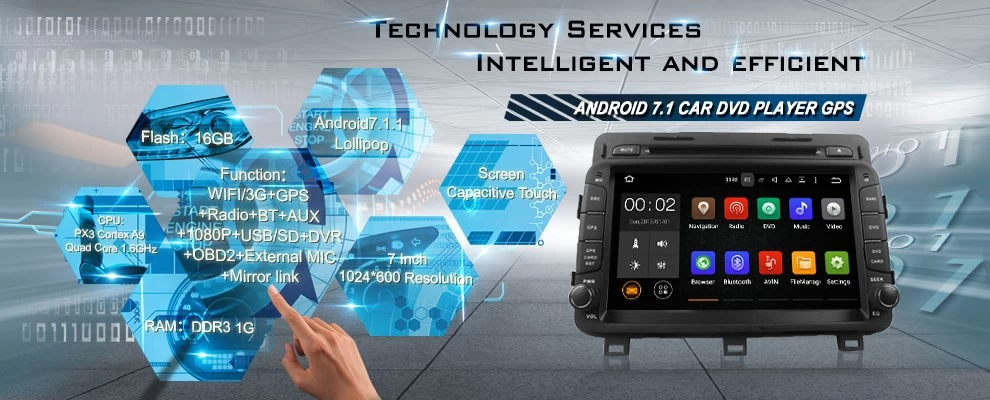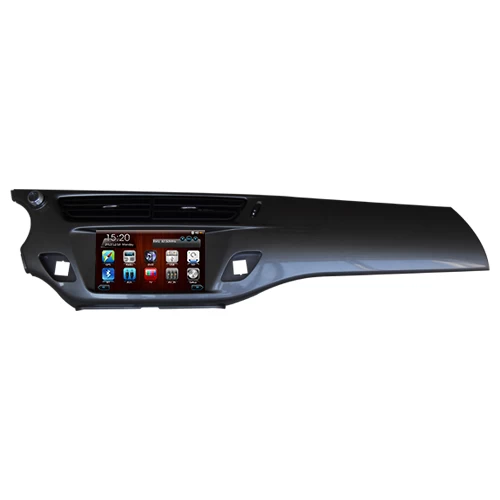Wan Gang parle de la subvention pour la subvention des véhicules à énergie nouvelle: pour maintenir
Jonin
LS QSTAR
2018-04-27 16:56:06
Wan Gang
On April 26, attending the 2018 China Auto Forum in Beijing, Wan Gang, vice chairman of the National Committee of the Chinese People's Political Consultative Conference, pointed out that half a hundred of those who travel through the Baili area is a long-term process of transformation and upgrading of automobiles. Although our country’s new energy vehicles started early, but overall The strength advantage is still meagre and needs to continue to strengthen industrial and policy innovation.
"We must maintain the continuity of the policy." When talking about the financial subsidies for new energy vehicles, Wan Gang said that after the fiscal subsidies have been retreated, corresponding policies and measures should be studied to establish a long-term operating mechanism and eventually achieve carbon trading.
Looking back on 2017, Wan Gang believes that China has made significant achievements in the field of new energy vehicles: On the one hand, the market is the largest in the world. In 2017, new energy vehicles have become a symbol of the global automotive industry transformation and upgrading. The world’s major countries have more than 1.42 million new energy vehicles, and China has sold more than 770,000 vehicles. The world’s cumulative sales of new energy vehicles have exceeded 3.4 million, with China accounting for more than 50%. On the other hand, China has made breakthroughs in the key technologies of new energy vehicles, the energy density of power batteries has been significantly increased, and the cost has decreased; the smart network-linked vehicles have gradually entered the market and automatic driving has begun to emerge.
Wan Gang pointed out that the rapid and healthy development of China's new energy vehicles has benefited from the central government’s great attention, benefiting from the establishment of a full range of systems: including policies for R&D systems, industrial development systems, market expansion mechanisms, and infrastructure construction. And business model innovations.
In 2012, China promulgated an industry plan for the development of energy-saving and new energy vehicles: By 2015, there will be approximately 500,000 vehicles. By 2020, it will reach an annual output of 2 million vehicles and 5 million vehicles.
Wan Gang said that the mileage of public transportation and rental of electric vehicles has been very difficult. By the end of 2014, there were only 150,000 vehicles in operation. After the related policies were fully implemented, the new energy automobile industry developed rapidly and reached 470,000 vehicles after one year. In 2017, the sales of new energy vehicles reached 770,000 units, which doubled compared to 2015. Looking at the current situation, in 2018, the sales of new energy vehicles had broken the problem of one million vehicles. This means that in order to achieve an annual production and sales volume of 2 million years in 2020, the consumer market will need to double every other year. “The plans we have formulated are still very courageous.”
Behind this, electrification and intelligence have become the trend of the global automotive industry. Since 2016, the Nordic countries have successively announced the suspension of the sale of fuel vehicles, Europe and the United States, and Japan, including India, to express an attitude of fully turning to electrification and intelligence. It also set out to develop a road map and timetable.
In the view of Wan Gang, China has become an important force in the innovation of new energy vehicles. The opening up and innovation of new energy vehicles in China will play a leading and leading role in the new round of opening up in the new era of the country.
Wan Gang also pointed out the challenges faced by the development of new energy vehicles in China at this stage:
First, the traditional drive system, in the face of more stringent emission standards, reduction in consumption and carbon reduction, and requirements for transformation and development, the pressure for transformation should be transformed into the dynamics of industrial upgrading. The internal combustion engine industry is facing tremendous pressure for transformation. Europe, Japan, and China have proposed future fuel consumption and emission standards, and companies must upgrade as soon as possible. The electrification of internal combustion engines and hybrid fuel and electric power will be the new direction of development.
Secondly, pure electric vehicles are now developing rapidly, but there are still many shortcomings. They cannot fully meet the requirements of the automotive market. They need to continue to explore new directions and new strategies in energy storage, high-efficiency drive, and energy recovery. , intelligent control, lightweight body and other perspectives continue to break through.
Third, basic research and infrastructure construction are not yet adequate, and the system for building operational services needs to be more complete and flexible. Therefore, we must focus on innovation, new energy vehicles, including the business model of the operation of the infrastructure market.
Fourth, in the future development of electrification and intelligence, the existing policies must be adjusted accordingly. The corresponding standards and regulations must be formulated at an accelerated pace, which is more applicable to innovation and development, green civilization, and universal inclusion.
Fifth, new energy vehicles should serve as an important starting point for pollution prevention and control. This requires more emphasis on technological innovation, transformation and upgrading, policy systems and international cooperation
On April 26, attending the 2018 China Auto Forum in Beijing, Wan Gang, vice chairman of the National Committee of the Chinese People's Political Consultative Conference, pointed out that half a hundred of those who travel through the Baili area is a long-term process of transformation and upgrading of automobiles. Although our country’s new energy vehicles started early, but overall The strength advantage is still meagre and needs to continue to strengthen industrial and policy innovation.
"We must maintain the continuity of the policy." When talking about the financial subsidies for new energy vehicles, Wan Gang said that after the fiscal subsidies have been retreated, corresponding policies and measures should be studied to establish a long-term operating mechanism and eventually achieve carbon trading.
Looking back on 2017, Wan Gang believes that China has made significant achievements in the field of new energy vehicles: On the one hand, the market is the largest in the world. In 2017, new energy vehicles have become a symbol of the global automotive industry transformation and upgrading. The world’s major countries have more than 1.42 million new energy vehicles, and China has sold more than 770,000 vehicles. The world’s cumulative sales of new energy vehicles have exceeded 3.4 million, with China accounting for more than 50%. On the other hand, China has made breakthroughs in the key technologies of new energy vehicles, the energy density of power batteries has been significantly increased, and the cost has decreased; the smart network-linked vehicles have gradually entered the market and automatic driving has begun to emerge.
Wan Gang pointed out that the rapid and healthy development of China's new energy vehicles has benefited from the central government’s great attention, benefiting from the establishment of a full range of systems: including policies for R&D systems, industrial development systems, market expansion mechanisms, and infrastructure construction. And business model innovations.
In 2012, China promulgated an industry plan for the development of energy-saving and new energy vehicles: By 2015, there will be approximately 500,000 vehicles. By 2020, it will reach an annual output of 2 million vehicles and 5 million vehicles.
Wan Gang said that the mileage of public transportation and rental of electric vehicles has been very difficult. By the end of 2014, there were only 150,000 vehicles in operation. After the related policies were fully implemented, the new energy automobile industry developed rapidly and reached 470,000 vehicles after one year. In 2017, the sales of new energy vehicles reached 770,000 units, which doubled compared to 2015. Looking at the current situation, in 2018, the sales of new energy vehicles had broken the problem of one million vehicles. This means that in order to achieve an annual production and sales volume of 2 million years in 2020, the consumer market will need to double every other year. “The plans we have formulated are still very courageous.”
Behind this, electrification and intelligence have become the trend of the global automotive industry. Since 2016, the Nordic countries have successively announced the suspension of the sale of fuel vehicles, Europe and the United States, and Japan, including India, to express an attitude of fully turning to electrification and intelligence. It also set out to develop a road map and timetable.
In the view of Wan Gang, China has become an important force in the innovation of new energy vehicles. The opening up and innovation of new energy vehicles in China will play a leading and leading role in the new round of opening up in the new era of the country.
Wan Gang also pointed out the challenges faced by the development of new energy vehicles in China at this stage:
First, the traditional drive system, in the face of more stringent emission standards, reduction in consumption and carbon reduction, and requirements for transformation and development, the pressure for transformation should be transformed into the dynamics of industrial upgrading. The internal combustion engine industry is facing tremendous pressure for transformation. Europe, Japan, and China have proposed future fuel consumption and emission standards, and companies must upgrade as soon as possible. The electrification of internal combustion engines and hybrid fuel and electric power will be the new direction of development.
Secondly, pure electric vehicles are now developing rapidly, but there are still many shortcomings. They cannot fully meet the requirements of the automotive market. They need to continue to explore new directions and new strategies in energy storage, high-efficiency drive, and energy recovery. , intelligent control, lightweight body and other perspectives continue to break through.
Third, basic research and infrastructure construction are not yet adequate, and the system for building operational services needs to be more complete and flexible. Therefore, we must focus on innovation, new energy vehicles, including the business model of the operation of the infrastructure market.
Fourth, in the future development of electrification and intelligence, the existing policies must be adjusted accordingly. The corresponding standards and regulations must be formulated at an accelerated pace, which is more applicable to innovation and development, green civilization, and universal inclusion.
Fifth, new energy vehicles should serve as an important starting point for pollution prevention and control. This requires more emphasis on technological innovation, transformation and upgrading, policy systems and international cooperation












